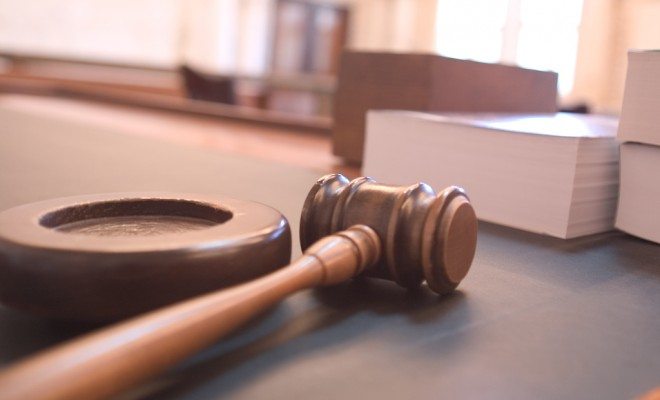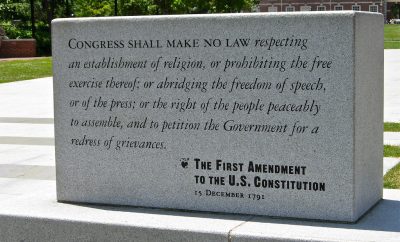 Image courtesy of [Joe Gratz via Flickr]
Image courtesy of [Joe Gratz via Flickr]
Law
Judicial Bias: What’s Morality Got to do With It?
Recent surveys have shown that a disproportionate number of Americans believe there is a problem in our country with fairness of the judicial system. Of course, there are various was that this comes to light, but one of the most prolific is judicial bias. From juvenile courts all the way up, it has been a problem for years.
But what indicates judicial bias, what can judges actually do if they feel themselves being biased, and what can citizens do about the issue? Looking back historically, you can see areas where the problem may have existed, which is a good indication of where it will pop up again.
So the question remains, does judicial bias exist, or is it something that we are making up, and if it exists, what can we do?
Judicial Bias
In his book “Mediating Dangerously – The Frontiers of Conflict Resolution,” Kenneth Cloke wrote about the idea of judicial bias:
[T]here is no such thing as genuine neutrality when it comes to conflict. Everyone has had conflict experiences that have shifted his or her perceptions, attitudes, and expectations, and it is precisely these experiences that give us the ability to empathize with the experiences of others. Nor are there any genuine neutrals in courts, including judges, CEO’s, managers, and human resources representatives, all of whom have biases and points of view, including the bias of wanting to protect the organization from being disrupted by conflict. Judges have the most intractable bias of all: the bias of believing they are without bias.
With a few life-changing court hearings coming up in the Supreme Court and around the world, there have been many think pieces and questions posed by the media. One of those questions is whether or not the personal beliefs of Supreme Court justices will come into play. The right to a fair and speedy trial is promised to us in the Constitution, after all, so that should certainly extend to the top.
Judicial bias occurs when a judge has a bias when making a ruling in a hearing in which he or she has a specific feeling or attitude toward a party that will hinder them from acting fairly. In this case, the judge is actually hindering the right to a fair trial. Typically, a judge will recuse him or herself if a bias occurs.
Can we prove judicial bias?
The problem is that we often cannot prove that judicial bias exists. Now, many legislatures and jurisdictions have allowed parties to seek disqualifications if it appears that there was judicial bias. One example is Title 28 U.S.C. § 455, which has provisions for when a federal judge is biased against a party, as well as when a reasonable, disinterested party would think he has a bias. However, that doesn’t necessarily mean that this is an easy thing to do. There are many cases where a judge might be biased, but that doesn’t mean that the “reasonable” person would think so.
There is another problem to consider as well: the duty to sit doctrine. Many judges, especially those who are “old school,” tend to follow this. They are basically obligated to stay on a case that they have been assigned to handle unless they are forced to step away.
Sensitive Subjects
In many careers we are instructed to go with our feelings and think with our hearts in order to reach the best possible choices. However, that isn’t something that people would tell judges to do. That doesn’t mean it doesn’t happen, however.
New research has shown that judges, especially Supreme Court justices, will actively pick out the cases with which they identify. In their report, Lee Epstein of the University of Southern California and two colleagues examined nearly 5,000 decisions in 516 Supreme Court free-speech cases that spanned the decades between 1953 to 2010 to determine whether there was any bias. When the Economist looked at the paper, they explained the political bias in a funny way:
For example, if the speaker seeking first amendment solace is a pro-lifer rankled by restrictions on protests near abortion clinics, his rights are very likely to be recognised by Justice Clarence Thomas, a conservative, but not by Justice Ruth Bader Ginsburg, a liberal (see Hill v Colorado). And if the speaker is a high-school kid holding up a banner reading “Bong Hits 4 Jesus” on a school trip, you can expect Justice Thomas to harumph while Justice Ginsburg rises to defend the student’s free-speech rights (see Morse v Frederick). Right-wing justices tend to uphold conservative speakers’ rights and rule against liberal litigants; liberal justices smile on their ideological friends and frown at their foes, too.
While it is funny to think about it in those terms, it has many people thinking about some of the other places that judges could have bias and if it has ever happened before. Many of these include cases where the jury is included in the bias.
Religion
Many of the cases that judges and juries hear go back to morality and our personal beliefs. Many of us are exposed to religion from an early age, and it would be foolish to think that judges would be able to separate, at least completely, their deeply ingrained beliefs from the law. Certainly, there might even be a place for it. In an article from the Journal of Law and Religion, a quote from a former judge puts it into perspective:
It’s funny. . .I think it [religion] has influenced me. I think it’s given me a set of values. . .you know, every once in a while a reading from the New or Old Testament kind of strikes you and you just wouldn’t hear it–or I wouldn’t–or read it if it weren’t for that. It causes you to pause a little bit and do a little self-examination. I think that’s healthy. So I think that does influence my perspective.
There have been several cases in the last few years in which lawyers claimed religious bias against their clients. In Tennessee, a judge found himself in hot water after forcing a man to change his baby’s name from Messiah to Martin after he determined that “The word ‘messiah’ is a title, and it’s a title that has only been earned by one person, and that one person is Jesus Christ.” The child’s parents were there to settle a few different issues, including the baby’s last name.
While not in court, a Texas judge, Carter Tinsley Schildknecht, was issued a public admonition because of some comments she made, including “describing District Attorney Munk as a ‘New York Jew’ and by criticizing a prosecutor’s beard because it made him look like a ‘Muslim’.”
Gender
One of the biggest sources of bias may be gender. In many of the cases where gender bias was found, it results in decisions that are based upon preconceived notions of sexual roles rather than on fair and impartial appraisals of individual situations. However, many people don’t see this bias because they are operating on those same preconceived notions.
In fact, New Jersey Supreme Court Justice Alan B. Handler wrote “[N]ot everyone has a nose for discrimination, especially in its most subtle forms. We are coming to realize that people are products of cultural conditioning which frequently obscures recognition of social wrongs…Discrimination frequently goes uncorrected because it is undetected.”
So what can we do?
Unfortunately, the idea that we can take away bias is misguided, as it is almost always going to be there. Just like in any other profession, bad judges do exist, but as they are in a power position, it can be hard to find a lawyer willing to expose that. The National Center for State Courts suggests that one of the biggest things we can do is reduce the wear and tear on judges by shortening their hours, provide more feedback on their performances, and encourage the courts to stay vigilant.
Even more so, we need to provide bias training to judges, and maybe even encourage them to do some research into the facts if a case involves someone’s religion, for instance. Diversity training has gotten a bit of a bad name, but it really does serve a purpose, and the courtroom may be the next place that needs it.
Conclusion
Bias is a part of life, unfortunately. Truly, we can never really let go of our bias, but judges have a responsibility to acknowledge it and try to make a fair judgement despite it. Juries have a similar responsibility, especially when they are still in the selection process.
Resources
Primary
Justia: Castellano v. Linden Board of Education
Additional
Journal of Law and Religion: Beneath the Robe: The Role of Personal Values in Judicial Ethics
Kenneth Cloke: Mediating Dangerously – The Frontiers of Conflict Resolution
Religion Clause: Texas Judge Disciplined For Religious-Cultural Bias
Reuters: Tennessee Judge Cited For Ordering Baby’s Name Changed From Messiah
Women Law: Operating a Task Force on Gender Bias in the Courts
American Bar Association: Overcoming Judicial Bias
American Psychology Association: Can Jurors’ Religious Biases Affect Verdicts in Criminal Trials?
NCSC: Strategies to Reduce the Influence of Implicit Bias








Comments